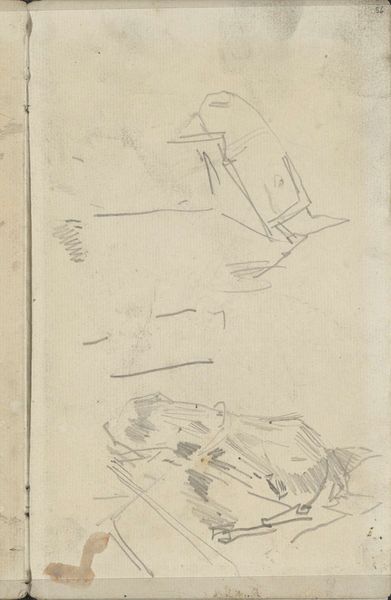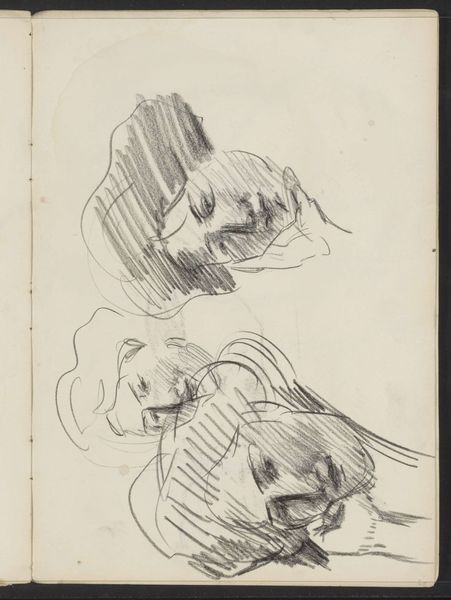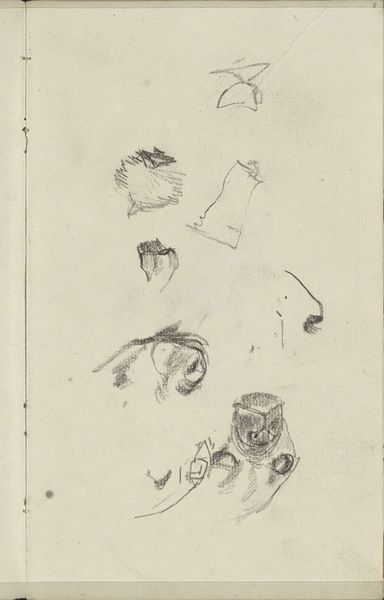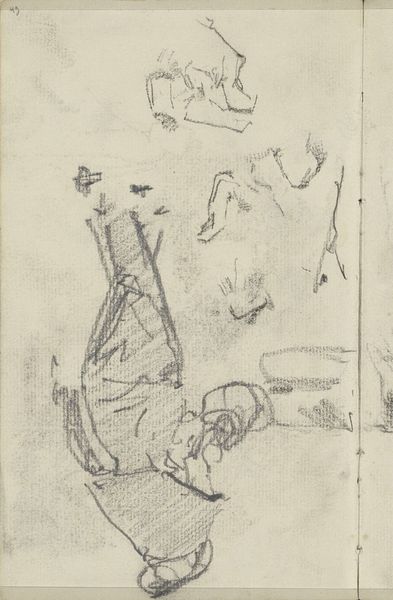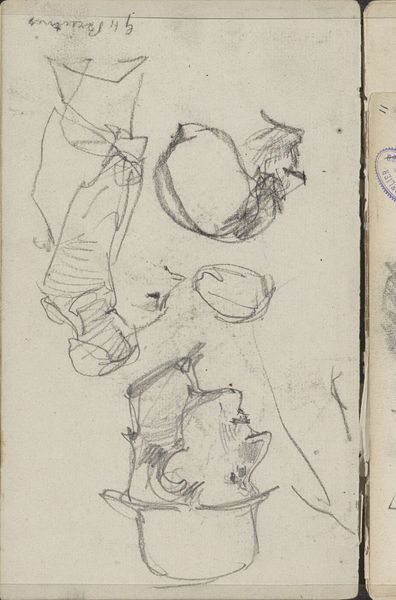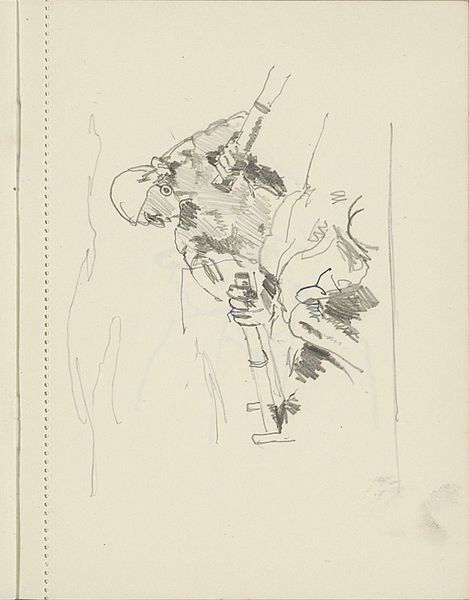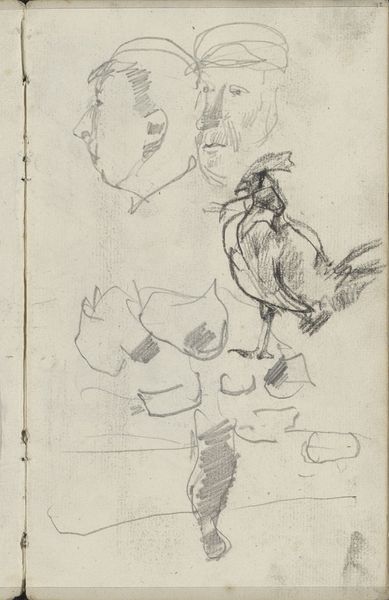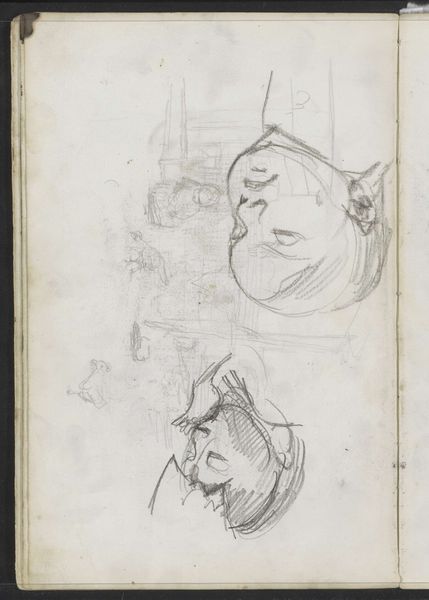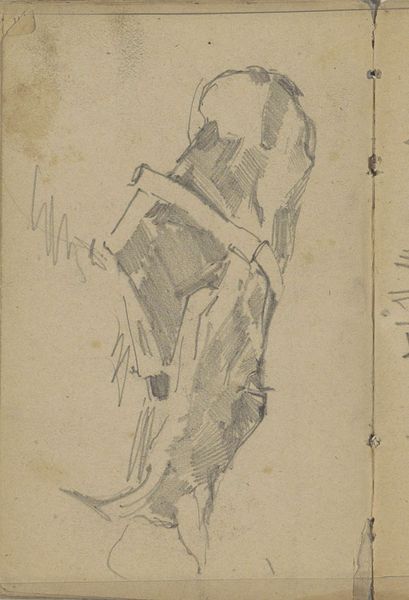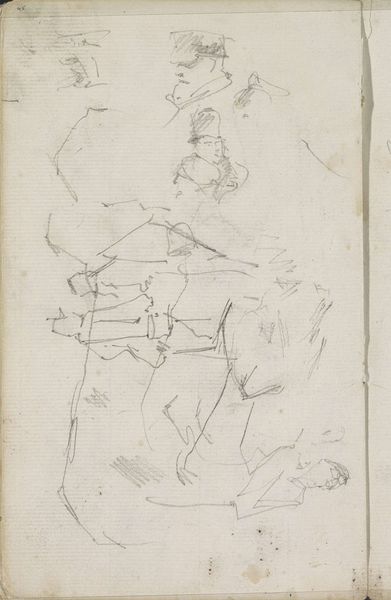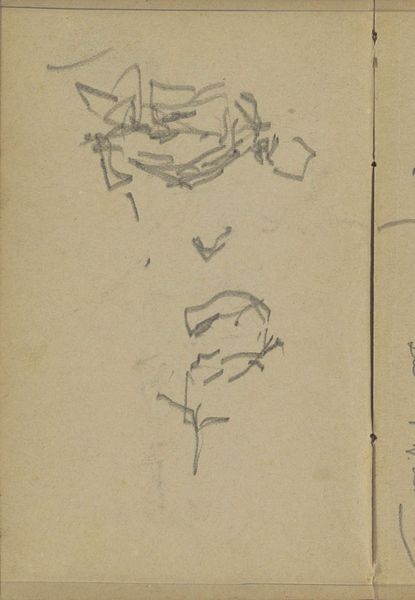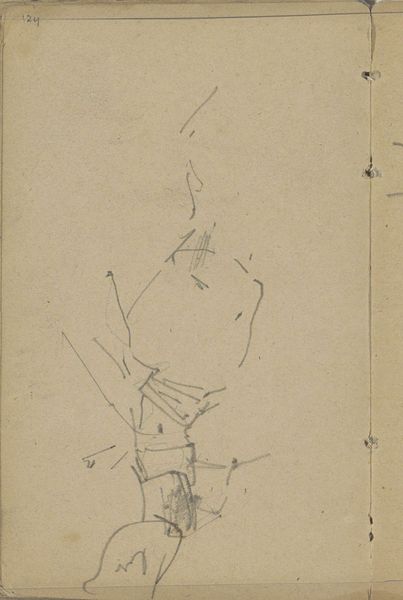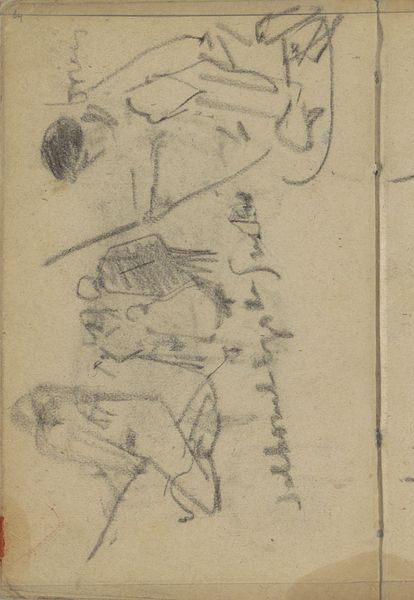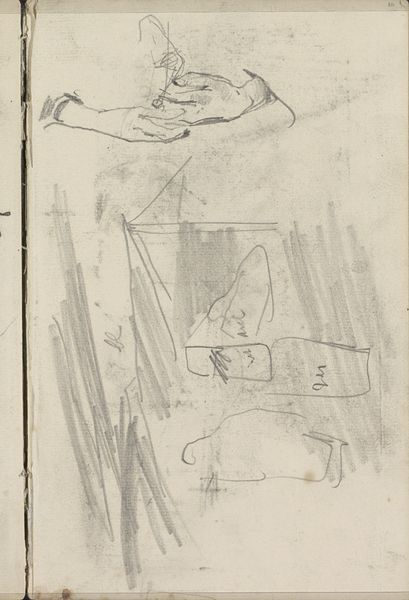
drawing, pencil
#
portrait
#
drawing
#
light pencil work
#
quirky sketch
#
impressionism
#
pencil sketch
#
personal sketchbook
#
idea generation sketch
#
sketchwork
#
ink drawing experimentation
#
sketch
#
pencil
#
sketchbook drawing
#
storyboard and sketchbook work
#
academic-art
#
sketchbook art
Copyright: Rijks Museum: Open Domain
Editor: This is "Twee mannenbustes," Two Male Busts, a pencil drawing by George Hendrik Breitner, made sometime between 1884 and 1886. It's at the Rijksmuseum now. To me, it feels like a glimpse into the artist’s private thoughts, just two quickly rendered faces, one above the other. What do you see in this piece? Curator: It’s fascinating how a seemingly simple sketch can resonate with cultural memory. Consider the recurring motif of paired figures throughout history. Often these pairings represent duality, conflict, or perhaps even complementary aspects of a single identity. Do you think these two busts, rendered in such close proximity, might suggest a dialogue, either internal or external? Editor: That's interesting! I hadn't thought about them being connected like that. I just saw them as separate studies. A dialogue... maybe a mentor and student? Curator: Perhaps. Or, consider the context of Breitner's time. The late 19th century saw a rise in interest in psychology, particularly the exploration of the subconscious. These loosely defined figures, caught in fleeting moments, could represent aspects of a personality, the conscious and the unconscious mind juxtaposed on the same page. Do the faces themselves evoke specific emotions in you? Editor: I guess the top one looks a bit stern, almost judgmental. The bottom one seems… resigned? Or maybe just tired. Curator: And how might those emotions relate to the symbols that faces become within cultural memory? Consider the weight that certain expressions carry, archetypes of authority and submission constantly renegotiated in the visual language of the time. Editor: That’s a lot to consider! I’ll definitely look at sketchbooks differently from now on. It's more than just practice, isn’t it? Curator: Precisely. It’s a visual record of thinking, feeling, and remembering, a palimpsest of cultural experience inscribed in every line.
Comments
No comments
Be the first to comment and join the conversation on the ultimate creative platform.
